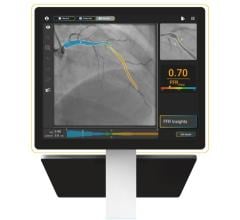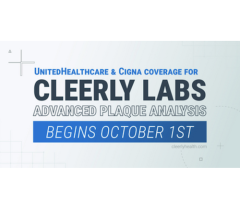
January 4, 2015 — At RSNA 2016, Siemens Healthineers unveiled its 510(k)-pending robot-supported Artis pheno angiography system, which was developed for use in interventional radiology, minimally invasive surgery, and interventional cardiology. In addition to possessing a zen40HDR flat panel detector and Gigalix X-ray tube for outstanding image quality, the ARTIS pheno boasts new 2k recording technology capable of delivering 2D imaging resolution that is four times higher in all recording processes than prior Siemens Healthineers systems. The system’s StructureScout feature can adapt and optimize imaging parameters to suit the X-rayed area, potentially resulting in less radiation dose than prior Siemens Healthineers systems. The Artis pheno also supports the treatment of multimorbid patients and can be fitted with a comprehensive range of optional software applications for complex cases. And to aid with infection control, the Artis pheno has large, sealed surfaces with fewer spaces, which are easy to clean and disinfect.
One System for Multimorbid Patients
Patients often suffer from multiple health issues that can complicate minimally invasive procedures or render them impossible. Older patients, in particular, face additional risks due to chronic disease. The Artis pheno angiography system helps facilities respond accordingly. Because it can scan up to 15 percent faster in the body area than prior Siemens Healthineers systems, the system’s syngo DynaCT clinical software application can produce 3-D images that use less contrast media, thus decreasing the load on the patient’s kidneys. And to accommodate contrast-sensitive patients, Artis pheno supports CO2 imaging of extremities. The system follows the tilted patient table and increases CO2visibility within the patient via its new StructureScout feature.
The Artis pheno’s C-arm is 5 inches wider than its predecessor system, the Artis zeego, and has a free inner diameter of 37.6 inches, which offers more space for handling adipose patients and enables use of longer instruments. The system’s multi-tilt table is designed to accommodate patients up to 617 pounds. The end of the table can tilt up and down to stabilize patient blood pressure or facilitate breathing, for example. And like the Artis zeego, the Artis pheno’s robotic construction provides a flexible isocenter, so it can follow all table positions while representing the patient’s target area from virtually any angle.
Benefiting Surgeons
Surgeons must be able to work easily while standing so they can perform lengthy operations without fatigue. They also must maintain optimum access within the operating area. Recognizing these needs, Siemens Healthineers designed the easy-float tabletop of the Artis pheno multi-tilt table to be easily moveable, regardless of the tabletop’s tilt or the patient‘s weight. The Artis pheno recognizes the tabletop’s position at all times and automatically aligns to the tabletop. The memory positions allow the system to move the C-arm out of the operating area quickly and move it back to the same position for further imaging, so surgeons can check results directly during the operation.
Support for Spinal Fusion Procedures
Optional application packages can be used with the ARTIS pheno to accommodate requirements in complex cases, including spinal fusion procedures. Up to 10 vertebrae can be visualized in 3-D imaging using syngo DynaCT Large Volume. Syngo Needle Guidance then allows the user to plan extensive procedures using screws or needles. Clinicians can precisely plan screw paths, and the Automatic Path Alignment function automatically aligns the C-arm to follow those paths. The laser integrated with the system’s image detector displays the planned surgical path, helping to improve accuracy and speed in the OR.
Easier Identification, Attribution of Arteries
Several applications on the Artis pheno support transarterial chemoembolization (TACE) of tumors. With TACE, embolic particles coated with a chemotherapeutic drug are delivered via catheter directly into the arteries leading to the tumor. With syngo DynaCT 360, the ARTIS pheno can generate a large-volume liver or lung image, for example, including the tumor’s anatomy and the vessels leading to it. Rapid rotation is vitally important in reducing movement artifacts, since TACE patients receive only local sedation. The syngo Embolization Guidance¹ application renders arterial vessels visible and helps distinguish vessels and treatment paths via color coding. Graphic overlaying of the selected vessel paths with real-time X-ray images distinguishes the vessels that supply the tumor for simplified microcatheter navigation, which can reduce radiation and contrast dose.
Tools to Combat Infection
Siemens Healthineers developed the Artis pheno to help hospitals combat high infection rates. An antimicrobial coating prevents bacteria and viruses from multiplying on the system. Seamless surfaces with no recesses, as well as easy-to-access spaces, facilitate system cleaning. The Artis pheno’s wiring is routed inside the system to prevent cables from becoming dirty and potentially transmitting bacteria. And since it is floor-mounted rather than ceiling-mounted, the system is not only easier to install in the operating suite, but the sterile air flow from the ceiling is interrupted during imaging only by the system’s flat-panel detector.
For more information: www.siemens.com/healthineers


 October 24, 2025
October 24, 2025 









